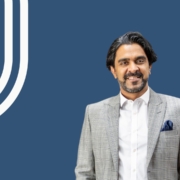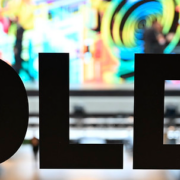- SXSW 2024: The Transition Generation - 15. March 2024
- SXSW 2024: Addressing the Consumers of Tomorrow - 13. March 2024
- SXSW 2024: Monday’s Tech Roundup - 12. March 2024
- Culture Media and Hype Cycles: The future of marketing? - 11. March 2024
- South by Southwest 2024: Embracing the Unknown - 11. March 2024
- Meta “Threads” – short trend or serious threat to Twitter? - 31. July 2023
- SXSW 2023 Day 5: Brand Science - 15. March 2023
In the world of SXSW 2024, poetry collides with planetary exploration, AI intersects with the crisis of journalism, and non-obvious thinking reshapes brand strategy. In Austin, the next crisis, breakthrough trends and opportunities are just around the corner – where innovation meets inspiration at the intersection of art and science.
What would one expect from the opening session of one of the world’s most important innovation and entertainment conferences in 2024? Perhaps discussions about how AI is at the heart of both our challenges and our solutions. But SXSW is a departure from the norm. This year’s event kicked off with two remarkable women from very different fields at the intersection of art and science.
Ada Limón, the United States Poet Laureate, and Dr. Lori Glaze, Director of NASA’s Planetary Science Division, took the stage to discuss NASA’s Europa Clipper mission to explore Europa, one of Jupiter’s moons. The mission is unique as it will transport scientific instruments along with a poetic message to humanity penned by Limón and accompanied by over 2.5 million signatures as part of NASA’s “Message in a Bottle” Campaign.
The conversation largely revolved around topics that were deeply personal to both women: For Lori Glaze, the pursuit of scientific truths lies beyond our ‘small blue dot’ known as Earth; for Ada Limón, the search for answers works through poetry. Intriguingly, their processes are quite similar. Comfort in the unknown, recognising the grounding, uplifting, and inspiring nature of uncertainty, and embracing the journey without knowing the destination, all resonate deeply in these uncertain times.
Breakthrough Technologies and the Journalism Crisis
Another highlight for entirely different reasons was the session on the “10 Breakthrough Technologies of 2024” featuring Elizabeth Bramson-Boudreau from MIT Technology Review. The technologies presented, while expected, included “AI for Everything” at the top, followed by Apple’s Vision Pro, and a mix of advancements in medicine (weight-loss drugs, gene-editing treatments), green energy (high-efficiency solar cells, heat pumps), and computing (from chiplets to exascale computers).
However, Bramson-Boudreau’s fervent introduction about the dire state of media and journalism worldwide stole the spotlight. She described it as an extinction-level event for the industry, highlighting mass layoffs, the closure of numerous established publications, significant cuts in science and technology reporting, and the acceleration of advertising budgets moving towards major platforms. This trend poses a severe threat to the future of society. According to a recent study by the Pew Research Center, the number of Americans who believe that science has a positive impact on society is declining. This is alarming because tackling the pressing challenges of our time, from regulating AI to mitigating climate change, requires an informed and educated public.
This moment calls for advertisers and media agencies to extend their sustainability efforts to include social responsibility, emphasising investment in high-quality news outlets.
Non-obvious thinking in brand strategy
In the realm of innovation and a changing world, it is often the unexpected twists and overlooked details that lead to breakthrough changes. This was exemplified by keynote speaker Rohit Bhargava, who shared his transformative journey: An unattended book signing in Singapore turned into a pivotal moment when he met a legendary movie producer, who challenged him to look beyond the obvious and embark on a journey of discovery, tackling human issues with non-obvious thinking.
Bhargava, the founder of the Non-Obvious Company and a bestselling author, established his company to promote non-obvious thinking – to notice the small, often missed details. In this year’s featured session at SXSW, he highlighted how conventional thinking exacerbates human problems: the increase of loneliness and anxiety in a work-from-home era that limits diverse interactions; the overwhelming overload of choices in every aspect of life; and the diminishing sense of purpose and motivation.
To address these challenges, Bhargava introduced key elements of non-obvious thinking that can be integrated into our daily lives. He suggested that simple actions, like breathing correctly, can enhance creativity and foster innovation. He also emphasised the importance of accepting multiple correct answers simultaneously, avoiding the stress of searching for a single solution.
True to his reputation as an exceptional storyteller, Bhargava closed the session with the story of the Fosbury Flop, a revolutionary technique from the 1968 Olympics that transformed the high jump. This change was sparked by a small shift in perspective – the recognition of the potential of new landing materials – by an athlete who noticed what others did not. It’s in these moments of clarity and creativity, when the conventional gives way to the extraordinary, that non-obvious thinkers have the power to change the world.
The Transition Generation: Emerging Tech Trends 2024
This year’s SXSW may have boasted royal visitors like Meghan, Duchess of Sussex, and Prince Harry, but the real queen of Austin remains Amy Webb, CEO and founder of the Future Today Institute, who presented the Emerging Tech Trends Report 2024.
Unsurprisingly, (Generative) AI was a focal point of the report, seen as a general-purpose technology capable of transforming business and society as fundamentally as the steam engine, electricity and the internet did in the past. However, this transition is distinguished by the simultaneous emergence of two other technology fields: The Connected Ecosystem of Things and Biotechnology. According to Webb, these three general-purpose technologies will initiate a new technology super cycle that will impact every aspect of our lives and redefine our existence.
Yet this monumental change is accompanied by fear, uncertainty and doubt, especially among business and political leaders. The natural tendency towards shorter planning cycles in response to unexpected disruptions contradicts the essential need for strategic long-term planning to maintain control and shape the future.
AI, dubbed the “Everything Engine,” underpins this tech super-cycle. Large Language Models are currently leading the AI wave, but little progress has been made over the year in addressing bias and accountability issues, as speed and scale prove more lucrative for businesses than ethical considerations.
The evolution of AI will transcend language; Large Action Models, capable of predicting next actions based on rich data from sensors, wearables, and other connected devices, represent the next frontier of Generative AI.
First published in Horizont.
This page is available in DE










Leave a Reply
Want to join the discussion?Feel free to contribute!